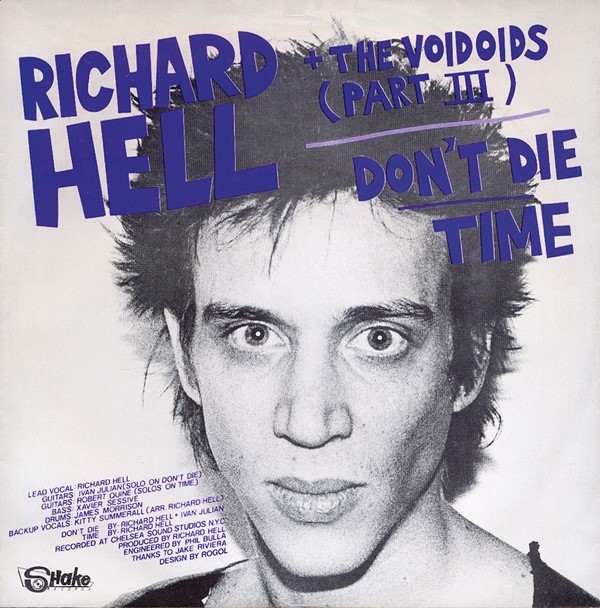He was one of the first to spike his hair and wear torn, cut and drawn-on shirts, held together by safety pins. It is he – the incredible Richard Hell – who opens the MET's latest show, Punk: From Chaos to Couture...
He was one of the first to spike his hair; one of the first to wear torn, cut and drawn-on shirts, held together by safety pins, and therefore, oh so aptly, it is he – the incredible Richard Hell – who opens the Met's latest show, PUNK: From Chaos to Couture. And not only this, but – piling accolade upon accolade – the American luminary of punk features in the latest issue of Another Man, in a feature which presents an exclusive extract from his long-awaited memoir I Dreamed I Was a Very Clean Tramp. Here to coincide with the opening, we present Hell's description of his trademark haircut...
"I arrived at the haircut by analysis. Rock and roll had two main innovative hairstyles so far: the Elvis ducktail, and the Beatles bowl cut. I tried to figure out what they signified and what they had in common and what made them work. Elvis's more or less had already existed – its power was in its southern under-class hoodlum origin (along with the reverse-macho of the way it required so much attention to maintain, and in that it screamed vanity), and the shock of that suddenly being splashed as glamorous and successful on to the front pages of national music magazines and then newspapers, when before it'd been limited to mug shots – truckdrivers and bootleggers and petty thieves.
"When that patchy raggedness was exaggerated to the degree that I exaggerated it, it expressed defiance and criminality too"
The Beatles' haircut, on the other hand, had been created by the band. It said two interesting, conflicting things: one was innocence and youthful charm since it was a hair style typical of five-year-olds of the Beatles' generation, and two was perversion, transgression and defiance since among adults only girls or bohemian freaks and artists wore their hair that long.
I thought of what the haircut of my childhood had been, and it was a super, short, stiff, almost military 'butch' or 'crew' cut that had gone ragged because kids don't like going to barbers. When that patchy raggedness was exaggerated to the degree that I exaggerated it, it expressed defiance and criminality too. For one thing, a guy with a haircut like that couldn't have an office job. In addition, it didn't require a barber. In fact no barber could even conceive of it. It was something you had to do yourself, and something that flaunted its freedom from propriety, even from stylishness."
The full Richard Hell feature appears in the S/S13 issue of Another Man, on sale now.
